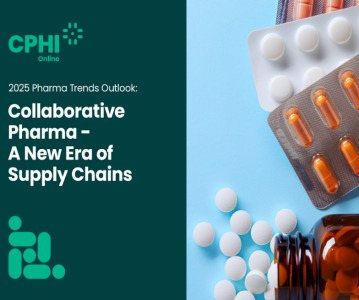Calculating Scope 3 Greenhouse Gas Emissions
The third in a quarterly series of blog posts about responsible supply chain management from the PSCI Chair, Caroline O'Brien
This month we should have been celebrating the success of the 26th meeting of the Conference of the Parties to the United Nations Framework Convention on Climate Change, also known as COP26. This would have been an important step in bringing governments, businesses, and NGOs together to accelerate action for a sustainable low carbon future.
This would have been an important step in bringing governments, businesses, and NGOs together to accelerate action for a sustainable low carbon future.
However, like so many others during 2020, the conference was postponed until next year. But the climate has continued to change, greenhouse gas (GHGs) emissions in the atmosphere have continued to increase, and global temperatures have continued to rise. Even within the context of the current pandemic, this issue has remained visible in the media and public consciousness, despite other priorities.
The key tenet of COP26 would have been in the pursuit of action on The Paris Agreement and its aim to keep the global temperature rise well below 2oC degrees above pre-industrial levels. In fact, experts are now recommending we need to go further, and limit rises to 1.5oC degrees. This will require net zero CO2 in the second half of this century. But the long-lived nature of many GHGs and the scale of this challenge requires action now.
At the PSCI, we seek to support our members’ responses to climate change. Promoting good environmental practices are enshrined in our Principles for responsible supply chain management, and so we are proud to have launched our guidance for the pharmaceutical industry on calculating GHG emissions, available to our 45 members and thousands of their suppliers.
Over the years, the targets and rhetoric have changed and the interest from governments, NGOs, and business has ebbed and flowed, but the rising threat from our changing climate has remained constant. Today, the associated risks are as high on the business agenda as I can ever recall. As a result, there is pressure on business to measure, manage, and reduce their contribution to climate change. Many companies have completed the process of measuring and reporting emissions of GHGs from their own operations – so-called scope 1 and 2 emissions - and as a result have put in place robust reduction programs. That includes a lot of great work by pharmaceutical companies within our membership to reduce emissions with many having made huge commitments and are now investing billions of dollars in energy efficiency and renewable energy initiatives.
More and more these commitments are also including a third scope – those indirect emissions that occur in a company’s value chain, upstream or downstream from own operations. We estimate for the pharmaceutical sector, these emissions are almost 10 times higher than the emissions generated by a company’s own operations. So, if we are serious about climate change, then scope 3 emissions cannot be ignored. While a company may not be able to directly control these emissions, it is hard to argue that they do not have an influence. That is where the PSCI seeks to help.
A first step is to measure and understand emissions from activities within the value chain, particularly those from suppliers that manufacture the goods and services we use. Again, we estimate that this accounts for over half of scope 3 emissions in our sector. But pharmaceutical companies have large and complex value chains, so establishing a measurable baseline against which to track emissions reduction can be a complex, time consuming, and difficult process.
Recognising this, our guide to calculating Scope 3 emissions seeks to help our members and their suppliers calculate their ‘footprint’ and prioritise activity in a consistent, pragmatic, and robust way. The guide is aligned with the GHG Protocol and offers useful and accessible advice for companies just getting started, as well as those with more advanced measurement capabilities. Our aim for the guide is not to say, “this is the way it should be done,” but to offer a straightforward common-sense approach that frees up our members to focus their energy on identifying areas for action and collaboration with suppliers to develop emissions reduction initiatives.
We’re pleased to add this guide to our wider set of environmental and climate-focused resources—including our recently delivered supplier capability trainings in China and India—to help the pharmaceutical industry promote responsible supply chain practices in this critical environmental area.
Caroline O’Brien
Global Quality Audit, AsiaPac Director, AstraZeneca and Chair, PSCI
About the PSCI:
The PSCI: Creating a better supply chain in the pharmaceutical and healthcare industry.
The Pharmaceutical Supply Chain Initiative (PSCI) is a group of pharmaceutical and healthcare companies who share a vision of better social, health, safety and environmental outcomes in the communities where we buy.
We believe that collectively PSCI members can share knowledge and expertise, across our industry, to drive complex, global change more effectively than any one organization alone. We have joined forces to promote responsible supply chain management and better business conditions across the industry.
Related News
-
News How GLP-1 agonists are reshaping drug delivery innovations
GLP-1 agonist drug products like Ozempic, Wegovy, and Mounjaro have taken the healthcare industry by storm in recent years. Originally conceived as treatment for Type 2 diabetes, the weight-loss effects of these products have taken on unprecedented int... -
News NextPharma Achieves Carbon Neutrality for Scope 1 and 2 Emissions
NextPharma has confirmed that it will achieve carbon neutrality for its Scope 1 and Scope 2 emissions starting January 1, 2025, marking a significant milestone in its sustainability journey. -
News 2025 Pharma Trends Outlook: Collaborative Pharma – A New Era of Supply Chains
A new year, a new Pharma Trends Outlook report! The 2025 Pharma Trends Outlook report examines key changes expected in the pharmaceutical industry for the coming year, particularly in regards to the supply chain. -
News Closing 2024 with Editors' picks of top articles from the past year
Coming to the end of 2024 and it’s certainly been a busy year, for CPHI and for the rest of the pharmaceutical and healthcare industry. Topics of conversation throughout the last 12 months have been varied, touching on the technical, to the polit... -
News SCHOTT Pharma’s sustainable journey with CPHI
Sustainability is of paramount importance in the pharmaceutical industry. See how a recent partnership between CPHI and SCHOTT Pharma has helped to highlight and accelerate their sustainability journey to reach global goals. -
News Day in the Life of a Green Chief Financial Officer
Our latest look into the daily lives of the people behind the pharma community brings us to meet Juan Jose Piedra Galan, Global Financial Planning & Analysis Manager for Galderma, otherwise known as 'The Green CFO'. -
News CPHI Milan 2024 - From the Floor
Milan and CPHI welcome you to 2024 CPHI Milan! As we celebrate the 35th edition of our flagship CPHI show, editors Vivian Xie and Lucy Chard bring you the latest from the show floor, conference sessions, and innovative solutions from all exhibitors, at... -
News CPHI Podcast Series: analysing supplier audits with the PSCI
This episode of the CPHI Podcast Series, hosted by Digital Editor Lucy Chard, goes through the results from the recent audits from the PSCI conducted on suppliers across the pharmaceutical industry, looking into ESG outcomes.
Recently Visited
Position your company at the heart of the global Pharma industry with a CPHI Online membership
-
Your products and solutions visible to thousands of visitors within the largest Pharma marketplace
-
Generate high-quality, engaged leads for your business, all year round
-
Promote your business as the industry’s thought-leader by hosting your reports, brochures and videos within your profile
-
Your company’s profile boosted at all participating CPHI events
-
An easy-to-use platform with a detailed dashboard showing your leads and performance







